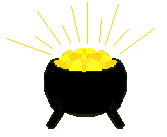
Absolutely everything you need to know about the ATOM ... and much much MORE!
Hannah's ATOM UNIVERSE

Chemistry? more like che-MYSTERY? don't worry you have come to the right place!

Brief OVERVIEW of the ATOM


Figure 1 "the Atom"
UNFORTUNATELY
- No scientific evidence was provided
-The hypothesis remained untested
-THUS at the time it was completely disregarded in the scientific field.
ATOMS contain a positively charge dense nuclues composed of PROTONS and NEUTRONS (also known as NUCLEONS) (FIGURE 1)
ATOMIC THEORY: ORIGIN
Leucippus and Deomcritus were two Greek Philosophers.
Around the year 440 BC, they claimed that matter consisted of particles
- particles which were indivisible. These particles were known as "atomos"
1) law of definite proportions
2) The law of conservation of matter
3) The law of multiple proportions

Richard Feynman (1918-1988); the American theoretical scientist stated;
"If... all of scientific knowledge were to be destroyed, and only one sentence passed on ot the next generation.. I believe that it is that all things are made of atoms."
How can we be sure that the theories and models which are developed by scientists portray the natural world accurately?
OR are they only useful and applicable understandings for controling, explaining and interpreting the natural world?
It is NOT POSSIBLE for us to view the subatomic particles (at least NOT DIRECTLY)
SO bearing this in mind, which WOK way of knowing do we utilize in order to make sense of inconclusive evidence- collected with technology?

John Dalton designed an atomic model of matter subsequent to experimentation; thus it was also supported by experimental data and accepted in the scientific field (unlike Leucippus and Democritis's findings) (figure 2)
Dalton's model served as the basis of atomic theory; due to this, it also alluded to the development of modern science.
He referred to the indivisible building blocks which matter consisted of as "atoms".
An overview of his theory is written below;
1) All matter (materials) consists of very small particles called atoms
2) An element consists of atoms of one type only.
3) compounds consist of atoms of more than one element and are formed by combining atoms in whole number ratios.
4) In a chemical reaction atoms are NOT created OR destroyed.
ATOMIC STRUCTURE: PREZI

Dalton's atomic theory


Figure 2 "Dalton's Atomic Theory"
Dalton's atomic theory : laws of chemical combination


Dalton's theory of 1808 was a scientific breakthrough, despite this, it did not answer the question of "what the atom is composed of?"

Not MY kind of plum pudding!
Rutherford's
Foil experiment

